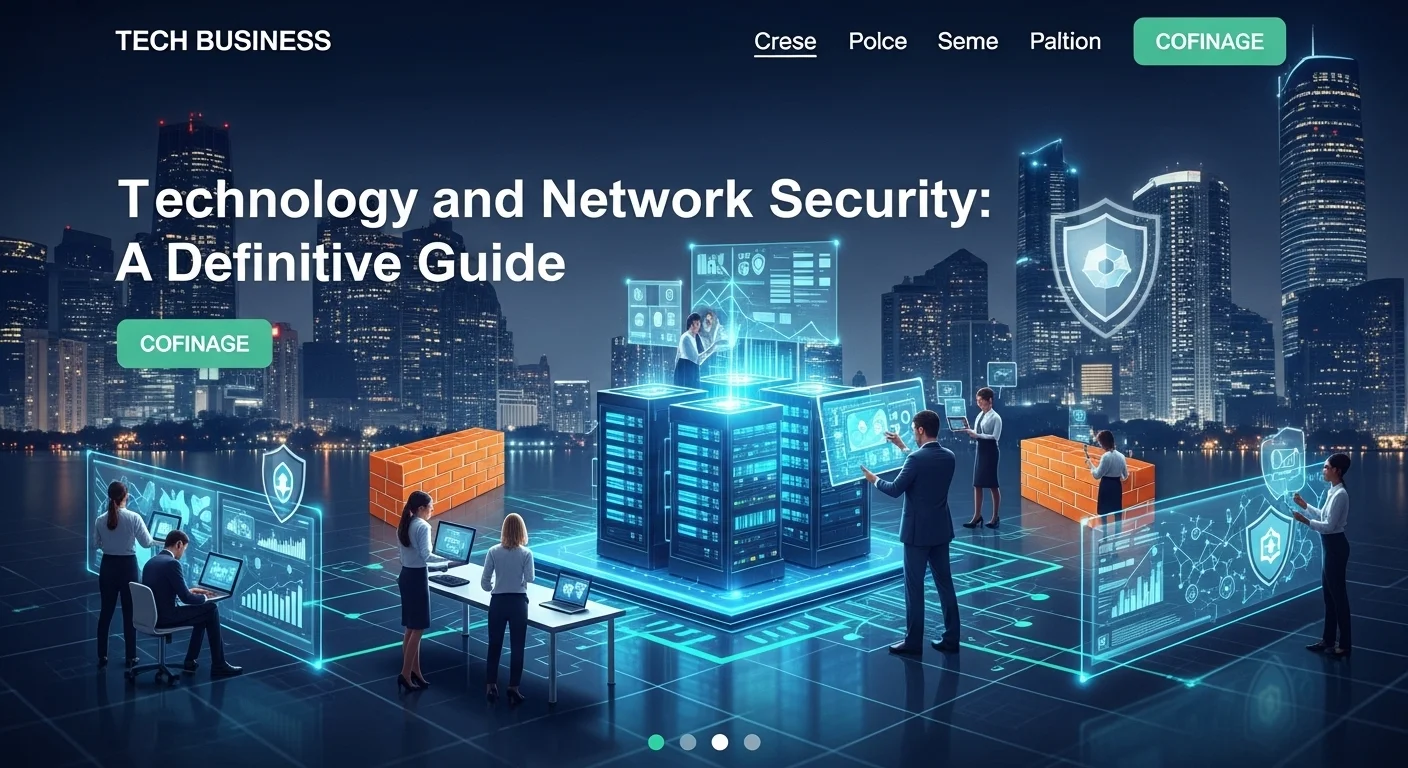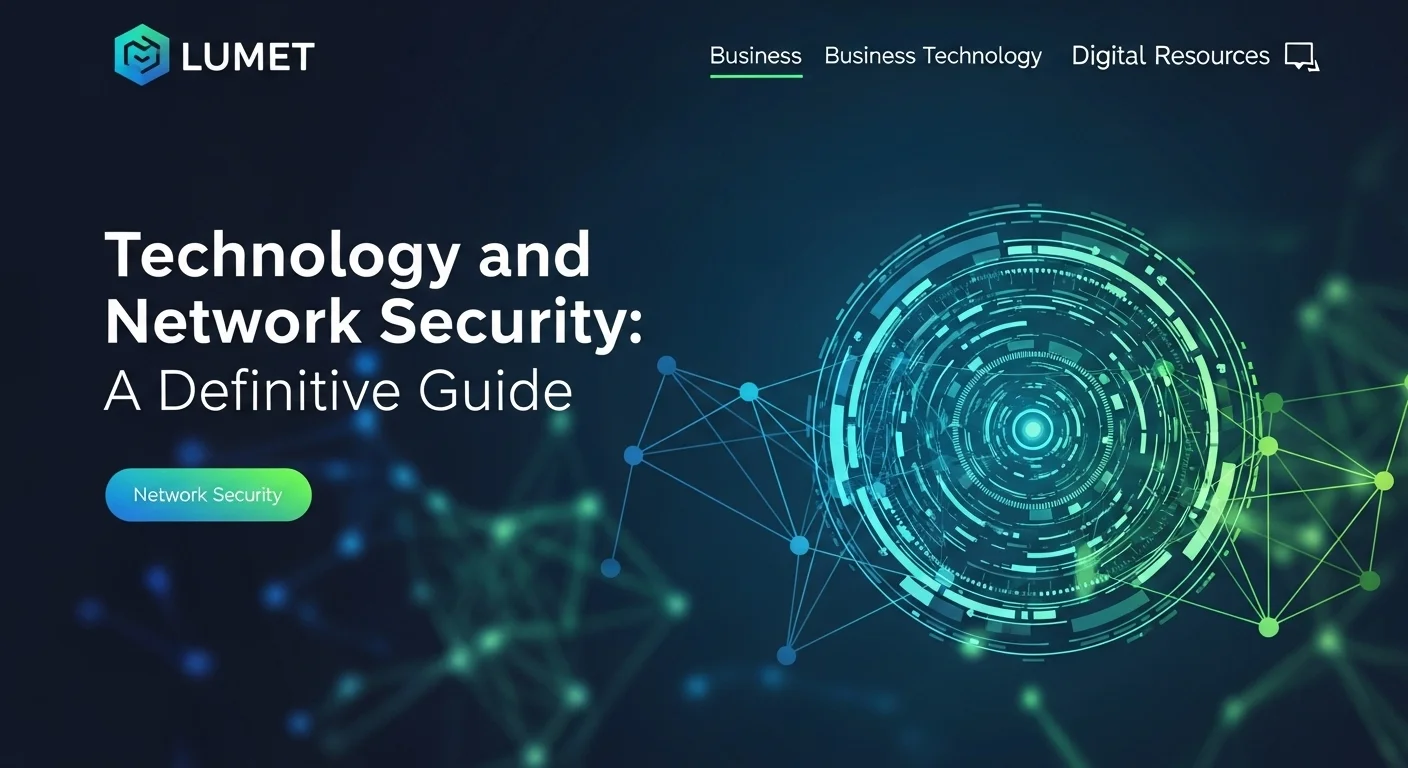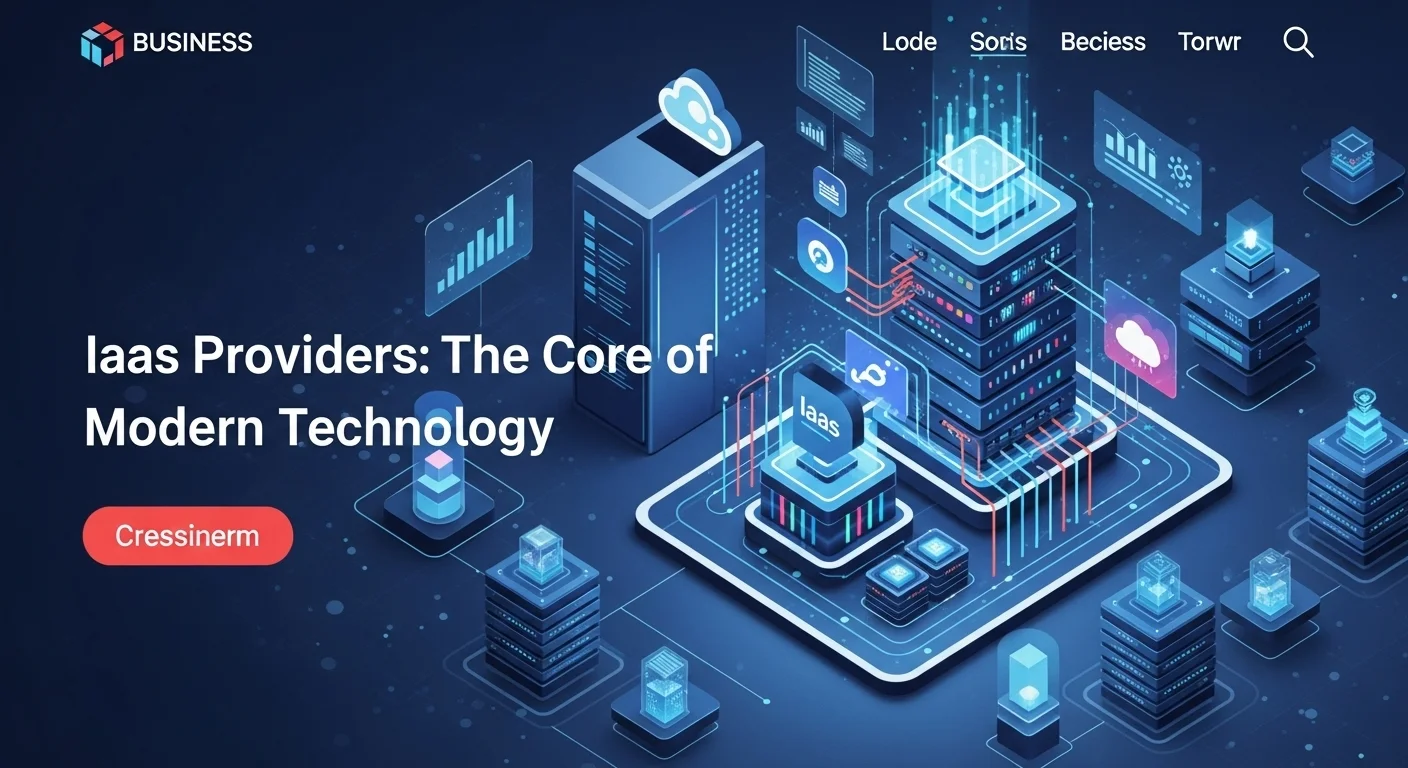A Practical Guide to Network Security: Protecting Your Digital World

Executive Summary
In my 15 years as a cybersecurity strategist, I've seen it all. From small businesses crippled by a single phishing email to large corporations brought to their knees by sophisticated attacks. The one constant is that a strong defense is always better than a frantic recovery. That's why I wrote this guide. I want to cut through the jargon and give you a straightforward, human look at network security. We'll explore what it really means to have a secure network, why it's the bedrock of any successful business today, and the real-world steps you can take to protect your valuable data. We’ll cover everything from the basics of firewalls to advanced AI-driven defenses, all explained in a way that makes sense. This isn't just for IT pros; it's for anyone who wants to feel confident and secure in our connected world.
Table of Contents
Table of Contents
What is Network Security and Why Does It Matter?
In our digital world, we often hear that data is the new gold. Well, if that's true, then your network is the vault, the roads, and the security guards all rolled into one. It's the invisible framework that connects everything, from the server in your office to the smartphone in your pocket. That's why network security has shifted from being a backroom IT task to a front-and-center business priority. So, what is it, really? Simply put, network security is the collection of tools, rules, and actions you take to protect your network from intruders. Think of it as the security system for your digital home or office. It's a layered defense designed to protect the privacy, integrity, and accessibility of your network and data using both software and hardware.
The importance of this can't be overstated. I've seen firsthand how a security breach can bring a thriving business to a grinding halt. It's not just about losing money; it's about losing trust, sensitive data, and your reputation. Imagine a hospital's patient records being exposed or a design firm's secret projects being stolen. The consequences are devastating. As our world becomes more connected with cloud computing, remote work, and the Internet of Things (IoT), our digital footprint expands. This creates more doors and windows for potential attackers, making a comprehensive security system for your network more crucial than ever before.
The Core Principles of Network Security
To really get a handle on security, you need to understand its three pillars, what we in the industry call the CIA triad: Confidentiality, Integrity, and Availability.
- Confidentiality: This is about keeping secrets. It ensures that your data is only seen by authorized people. We use tools like encryption, which scrambles data so it's unreadable to outsiders, and access controls that act like a digital guest list, deciding who gets in. This is key for privacy and meeting legal standards like GDPR.
- Integrity: This ensures your data is accurate and trustworthy. It means the information hasn't been tampered with, either by accident or maliciously. Think of it as a digital seal of authenticity. Technologies like hashing and digital signatures help us verify that what was sent is exactly what was received.
- Availability: This means that authorized users can get to the network and data whenever they need to. It’s about defending against things that could shut you down, like Denial-of-Service (DoS) attacks that flood your network with junk traffic. Things like backup systems and disaster recovery plans are all about ensuring availability.
A great security strategy finds the right balance. Too much confidentiality might make it hard for your own team to get the data they need, so it's all about finding that sweet spot.
The Evolving Threat Landscape
The need for solid data and network protection is fueled by cybercriminals who are getting smarter and more creative every day. It's a constant cat-and-mouse game. Here are some of the usual suspects we're up against:
- Malware: This is a catch-all term for nasty software like viruses, worms, and spyware. Ransomware is a particularly brutal version where attackers lock up your data and demand a hefty fee to get it back.
- Phishing: These are deceptive emails or messages designed to trick you into giving away logins, passwords, or credit card info. They often look like they're from a trusted source, like your bank or a colleague.
- Denial-of-Service (DoS/DDoS) Attacks: The goal here is pure disruption. Attackers overwhelm your network with so much traffic that it becomes unavailable for legitimate users.
- Man-in-the-Middle (MitM) Attacks: Imagine someone secretly listening in on a private conversation and potentially changing what's said. That's a MitM attack, where an attacker intercepts communication between two parties.
- Insider Threats: Sometimes, the call is coming from inside the house. A threat can come from a disgruntled employee or even a careless one who accidentally exposes data.
This ever-changing list of threats means we can't just set up a defense and forget it. We need a dynamic security system that can adapt and respond to new tricks in real-time.
The Role of Firewalls in Your Defense
You can't talk about network security without talking about firewalls. For as long as I can remember, firewalls and network security have gone hand-in-hand. A firewall is your network's bouncer. It stands at the door, checks the ID of all incoming and outgoing traffic, and decides who gets in and who gets kicked out based on a set of rules you define. It's the barrier between your trusted internal network and the wild west of the internet.
There are a few different types, from basic packet-filters to the more sophisticated Next-Generation Firewalls (NGFWs) that can inspect traffic more deeply and integrate other security features. While a firewall is absolutely critical, it's just one part of the team. A truly strong defense uses firewalls alongside other tools like antivirus software, intrusion detection systems, and VPNs to create layers of protection. If one layer fails, another is there to catch the threat.
Business Applications and Benefits
When you invest in a solid network security plan, you're not just buying technology; you're buying peace of mind and business continuity. The most obvious benefit is protecting your assets—your customer data, financial records, and creative ideas. Keeping this data safe builds customer trust, which is priceless. A single data breach can shatter a brand's reputation overnight. Plus, many industries have strict data protection rules (like HIPAA in healthcare). Good security helps you stay compliant and avoid massive fines. It also keeps your business running smoothly. Cyberattacks cause downtime, and downtime costs money. By preventing attacks, you ensure your team can stay productive. In the end, investing in a complete data and network security plan isn't an expense; it's an investment in your company's future. The question isn't *if* you'll be targeted, but *when*—and being prepared is your greatest strength.

Your Complete Guide to Network Security Solutions
Alright, let's roll up our sleeves and get into the nitty-gritty. Building a truly secure network involves a mix of smart technology, solid business practices, and the right resources. It’s not a one-and-done task but a continuous commitment. Here's my breakdown of the key components you need to build a resilient network security system for your business.
Technical Methods: The Building Blocks of a Secure Network
A secure network is built with several layers of technical controls. Think of it like building a fortress; you need strong walls, vigilant guards, and secret passages. Here are the essential building blocks for your data network security.
1. Access Control
This is all about who gets the keys to the kingdom. You want to ensure only the right people can access your network and data.
- Authentication: This is proving you are who you say you are. We've all used passwords, but today, Multi-Factor Authentication (MFA) is the standard. It's like needing a password *and* a fingerprint to open a door—much more secure.
- Authorization: Once you're in, authorization determines what you're allowed to do. I’m a big fan of Role-Based Access Control (RBAC), where permissions are tied to a job role, not a person. It’s cleaner and safer.
- Network Access Control (NAC): These tools are the gatekeepers. They check every device trying to connect to your network and can block or quarantine anything that looks suspicious or doesn't meet your security standards.
2. Threat Prevention and Detection
You need to stop threats from getting in and spot the ones that sneak past. Here's your security arsenal:
- Firewalls: As we've discussed, firewalls and security are your first line of defense. Modern Next-Generation Firewalls (NGFWs) are essential, offering a suite of protections in one package.
- Intrusion Detection/Prevention Systems (IDS/IPS): An IDS is like a security camera that spots suspicious activity and sounds an alarm. An IPS is like a security guard that can step in and block the threat.
- Antivirus and Anti-Malware: This is a must-have on every computer and server. Think of it as a vaccine for your devices, protecting them from known viruses and malware.
- Sandboxing: This is a clever one. It's a safe, isolated environment where you can open a suspicious file or run a questionable program to see what it does without risking your actual network.
3. Data Protection and Encryption
Your data is valuable, so you need to protect it, whether it's sitting on a server or flying across the internet. Encryption is your best friend here.
- Virtual Private Networks (VPNs): A VPN creates a secure, encrypted tunnel over the internet. I always tell remote teams and traveling employees that using a VPN is non-negotiable for protecting company data.
- Data Loss Prevention (DLP): These tools are like a security guard for your data itself. They can identify sensitive information and stop it from being copied, printed, or sent where it shouldn't go.
- Encryption Protocols: You've probably seen 'HTTPS' in your browser's address bar. That's powered by protocols like TLS/SSL that encrypt your web traffic. You should also encrypt data that's just sitting on your servers ('at rest').
4. Network Segmentation
Don't put all your digital eggs in one basket. By dividing your network into smaller, isolated segments, you can contain a breach. If one area is compromised, the attacker can't easily move to another. For example, your guest Wi-Fi should be completely separate from your internal network. This is a core idea of the 'Zero Trust' model I'm a big advocate for.
Business Techniques and Strategies
Great technology is only half the battle. Your network security needs to be backed by smart business strategies and a security-first culture.
1. Develop Clear Security Policies
Your security policies are your rulebook. They should clearly spell out the dos and don'ts for everyone. This includes things like an Acceptable Use Policy, an Incident Response Plan, and a plan for when disaster strikes.
2. Train Your People
I've seen it time and again: the weakest link is often a person, not a piece of technology. Regular security awareness training is vital. Teach employees how to spot phishing emails and what to do if they suspect something is wrong. Run simulated phishing attacks to keep them on their toes.
3. Manage Your Risks
You can't protect against everything, so you need to be smart about it. Regularly assess what your biggest risks are. Identify your most valuable data and where your weaknesses lie. Then you can make informed decisions about where to invest your time and money.
4. Plan for a Bad Day
No system is perfect. Eventually, a security incident will happen. A good Incident Response Plan is your playbook for that day. It details exactly who does what to contain the threat, get rid of it, and recover. Practice this plan so that when a real crisis hits, your team can act quickly and decisively.
Available Resources and Comparisons
The security market is crowded, so here's my take on some common choices.
1. In-House vs. Managed Services (MSSP)
- In-House: Big companies with deep pockets might build their own Security Operations Center (SOC). This offers total control but is incredibly expensive and complex to run 24/7.
- Managed Security Service Providers (MSSPs): For most small to medium-sized businesses, this is the way to go. Outsourcing your security to an MSSP gives you access to expert support and 24/7 monitoring for a predictable monthly fee. It's a game-changer.
2. All-in-One vs. Best-of-Breed
- All-in-One (UTM): These devices bundle multiple security features (firewall, security functions, etc.) into one box. They're simpler and often more affordable, making them great for smaller businesses.
- Best-of-Breed: This approach means picking the very best tool for each specific job from different vendors. You might get better performance, but it's more complex and expensive to manage.
3. Open Source vs. Commercial Tools
- Open Source: Tools like Snort or pfSense are powerful, free, and highly customizable. The catch? You need serious technical expertise to run them, and there's no official support line to call.
- Commercial Tools: Solutions from big names like Cisco, Palo Alto Networks, or Fortinet are polished, user-friendly, and come with professional support. They cost more, but for most businesses, that reliability is worth it for their data and network security.
Conclusion: Building a Layered Defense
Building an effective network security strategy is a journey, not a destination. It demands a layered approach that weaves together strong technology, smart business practices, and an aware, vigilant team. A well-designed network security system with advanced firewalls and proactive policies is your foundation. From there, your choices will depend on your company's size, budget, and risk tolerance. Ultimately, the goal is to create a resilient defense that can adapt to new threats and protect what matters most, allowing your business to operate with confidence.

Practical Tips and Strategies to Master Your Network Security
In our hyper-connected world, feeling secure online isn't a luxury—it's essential. For a business, it's the foundation of stability and customer trust. For you at home, it's about protecting your identity and finances. Improving your network security is more than just installing an app; it's about adopting a strategic mindset. Here are my favorite practical tips and advanced strategies to bolster your network security system and give you peace of mind.
Best Practices for Foundational Security
No matter the size of your organization, some rules are universal. I consider these non-negotiable for a secure network.
Master Your Passwords & Use MFA: This is your first line of defense. Insist on long, complex passwords. But more importantly, enable Multi-Factor Authentication (MFA) everywhere you can. I can't stress this enough. MFA is the single most effective control you can implement to stop attackers who have stolen a password.
Keep Everything Updated: This sounds simple, but it's critical. Hackers love to exploit old, known vulnerabilities in software. Set everything to update automatically—your operating system, your apps, your network gear. This closes the doors before attackers can even knock, a simple but powerful part of data network security.
Lock Down Your Wi-Fi: Never use the default password that came with your router. Change it immediately, and give your network a name that doesn't identify you or your business. Always use WPA3 encryption if it's available. I also recommend setting up a separate guest network. It takes five minutes and stops visitors from having any access to your main network.
Segment Your Network: Don't have a flat network where everything can talk to everything else. Split it up. For instance, your security cameras or point-of-sale terminals should be on a separate network from your employee computers. This is a huge step in containing a breach if one happens.
Back Up, Back Up, Back Up: If you get hit with ransomware, your backups are your lifeline. I live by the 3-2-1 rule: three copies of your data, on two different types of media, with one copy stored off-site (the cloud is great for this). And please, test your backups regularly to make sure they actually work!
Leveraging Business Tools for Enhanced Security
Here are some of the tools I rely on to automate and strengthen a network security system.
Unified Threat Management (UTM) / Next-Gen Firewalls (NGFW): These all-in-one security appliances are fantastic. They combine a powerful firewall, intrusion prevention, content filtering, and VPN capabilities into one managed device. It simplifies everything and keeps your firewalls and network security policies consistent.
Endpoint Detection and Response (EDR): Your old antivirus isn't enough anymore. EDR tools are like having a security guard on every single computer. They constantly monitor for suspicious behavior, can automatically isolate an infected device, and give you the tools to investigate what happened. This is a must for modern data and network security.
Security Information and Event Management (SIEM): A SIEM is your central command center. It pulls in log data from all your systems—firewalls, servers, applications—and uses smart analytics to spot signs of an attack. Modern SIEMs use AI to find threats that a human would miss.
Vulnerability Management Tools: These tools are like having a security consultant who constantly scans your network for weaknesses, like unpatched software or bad configurations. They then give you a prioritized to-do list so you can fix the most dangerous problems first.
Advanced Strategies for a Future-Proof Network
The threat landscape is always changing, so your strategies must evolve too. Here's how to stay ahead of the curve.
Embrace a Zero Trust Mindset: The old 'castle and moat' security model is dead. 'Zero Trust' is the new standard. It's simple: never trust, always verify. Every single request to access your data must be authenticated and authorized, regardless of whether it's coming from inside or outside your network. It's a fundamental shift in how we think about security.
Put AI and Machine Learning to Work: AI is a game-changer for network security. AI-powered systems can sift through massive amounts of data to find the faintest signals of an attack. They can predict threats, automate responses, and make your security system smarter over time.
Secure Your Cloud Environments: Moving to the cloud doesn't mean you can forget about security. It's a shared responsibility. The cloud provider secures the infrastructure, but you are responsible for securing your data within it. This means configuring services correctly, managing who has access, and using cloud-specific security tools.
Build a Killer Incident Response Plan: Assume you will be breached. What happens next? A practiced Incident Response (IR) plan is your guide. It defines roles, communication, and technical steps to take. Run drills and tabletop exercises to make sure your team is ready to execute it flawlessly when the pressure is on.
Enhancing the Human Element
Technology is great, but people are your real front line.
Continuous Security Training: Don't just do a boring annual training. Make it continuous and engaging. Send out simulated phishing emails, share quick security tips, and make learning about security part of the culture.
Foster a Culture of Security: This has to come from the top. When leaders champion security, everyone takes it seriously. Create an environment where employees feel safe reporting suspicious activity, without fear of being blamed.
Quality External Resources
Staying informed is key. For reliable, in-depth information and threat intelligence, one of the best resources out there is the SANS Institute. I've relied on their research and training for years.
In the end, enhancing your technology experience through better network security is a continuous journey. It requires a layered defense that combines smart habits, modern tools, and forward-thinking strategies. By building a strong network security system, including essentials like robust firewalls and security protocols, and by empowering your people with knowledge, you create a resilient digital environment. This holistic approach to data and network security will not only protect your assets but will empower you to innovate and grow with confidence.
Expert Reviews & Testimonials
Sarah Johnson, Business Owner ⭐⭐⭐
The advice on network security is solid, but I'd love to see a few more real-world examples specifically for small business owners like myself.
Mike Chen, IT Consultant ⭐⭐⭐⭐
This is a very useful article on network security. It definitely helped me get a better grasp on the subject, though a couple of the concepts could be a little simpler.
Emma Davis, Tech Expert ⭐⭐⭐⭐⭐
Excellent article! So comprehensive and clear on network security. This was a huge help for my own work and I understood everything perfectly.



